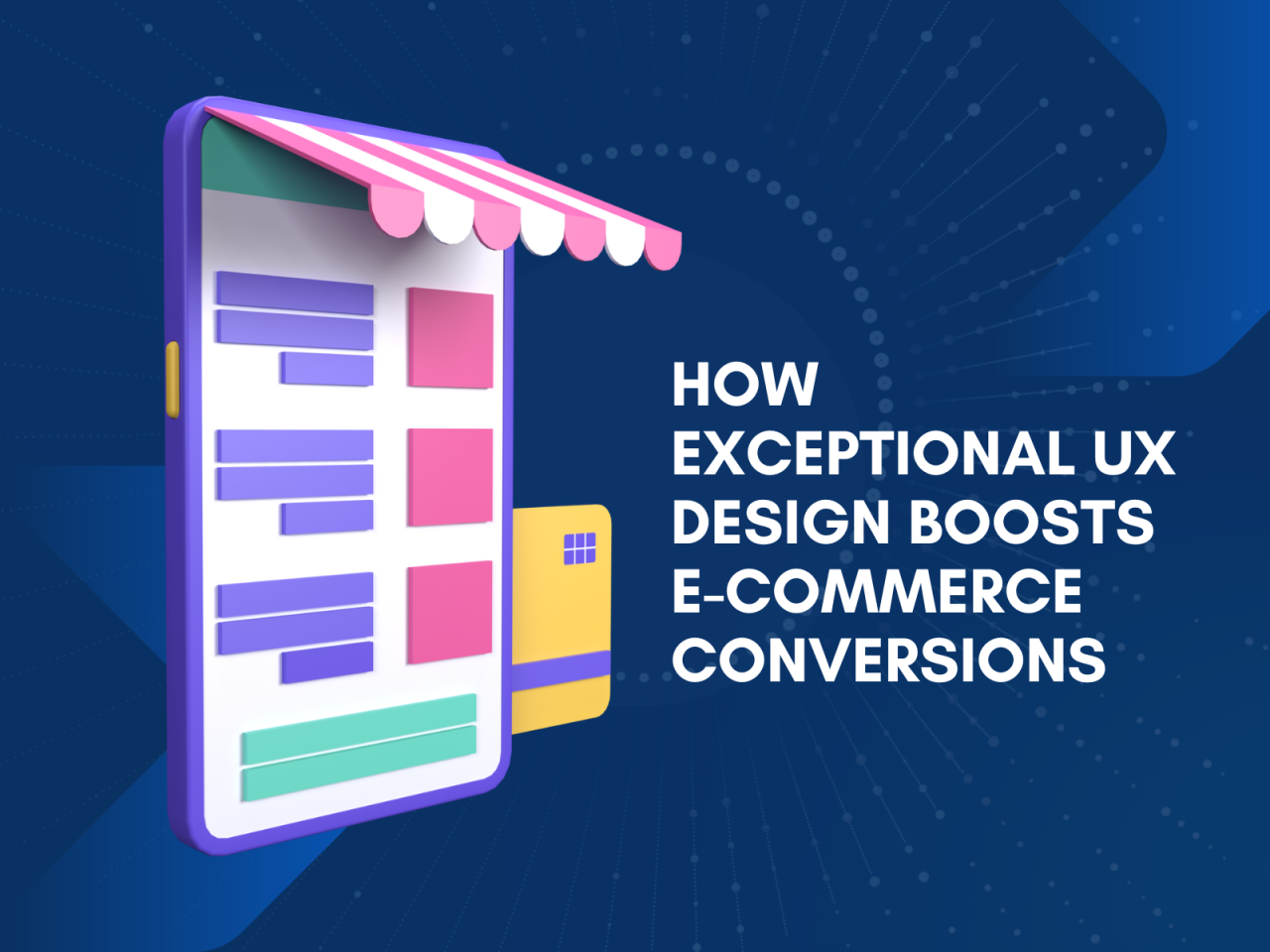
Why Top Executives Should Embrace Integrated Composable Commerce
Why top executives should embrace integrated composable commerce is a question increasingly crucial in today’s dynamic e-commerce landscape. The traditional, monolithic approach to online selling is struggling to keep pace with the ever-changing demands of consumers and the rapid evolution of technology. This article explores why a shift towards a composable architecture is not just beneficial, but essential for long-term success and competitive advantage in the modern marketplace.
We’ll delve into the specific advantages this approach offers, from increased agility and scalability to enhanced customer experiences and reduced operational costs. Prepare to discover how composable commerce can transform your business.
The modern business world is a whirlwind of change. Customer expectations are soaring, technology is advancing at breakneck speed, and competition is fiercer than ever. Legacy systems, often rigid and inflexible, are proving to be a significant obstacle for companies looking to adapt quickly and efficiently. Composable commerce offers a solution: a modular approach that allows businesses to build and integrate only the components they need, creating a flexible, scalable, and adaptable e-commerce platform.
This allows for faster innovation, quicker response to market shifts, and a far more personalized customer experience, ultimately driving growth and profitability.
The Evolving Commerce Landscape
The modern commerce environment is a dynamic and fiercely competitive arena, shaped by rapid technological advancements, shifting consumer expectations, and global economic fluctuations. Businesses are facing unprecedented challenges as they strive to maintain relevance and profitability in this ever-changing landscape. Understanding these trends and their implications is crucial for survival and success.The increasing prevalence of mobile commerce, the rise of social commerce, and the growing importance of personalized experiences are just some of the factors driving this evolution.
Consumers are more informed, more demanding, and more empowered than ever before, expecting seamless, omnichannel experiences that cater to their individual needs and preferences. This necessitates a level of agility and responsiveness that many traditional businesses struggle to achieve.
Challenges Faced by Businesses in Today’s Rapidly Changing Market
Businesses face a multitude of challenges in today’s dynamic commerce environment. These challenges stem from the need to adapt to evolving consumer behaviors, technological advancements, and increasing competition. Failing to adapt quickly can lead to lost market share and decreased profitability. For example, a retailer that fails to offer a robust mobile shopping experience risks losing customers to competitors who do.
Similarly, a business that doesn’t leverage data effectively to personalize the customer journey may struggle to compete with businesses that do.
The Impact of Legacy Systems on E-commerce Agility and Scalability
Many businesses rely on legacy systems that were not designed to handle the complexities and demands of modern e-commerce. These outdated systems often lack the flexibility and scalability needed to adapt to changing market conditions and customer expectations. For example, a monolithic e-commerce platform may struggle to integrate new features or adapt to changes in consumer behavior quickly. This lack of agility can result in missed opportunities and decreased competitiveness.
The limitations of legacy systems often manifest as slow loading times, poor user experiences, and difficulty in integrating with new technologies. The costs associated with maintaining and upgrading these systems can also be significant, further hindering growth and innovation. In contrast, a composable commerce architecture allows businesses to easily add, remove, or replace individual components as needed, fostering greater agility and scalability.
This modular approach allows for faster innovation and quicker adaptation to market trends, a crucial advantage in today’s fast-paced environment. For instance, a business using a composable architecture can quickly integrate a new payment gateway or personalize the shopping experience without extensive re-engineering of the entire system.
Understanding Composable Commerce
Composable commerce represents a significant shift in how businesses approach their e-commerce strategies. It moves away from the limitations of traditional, monolithic systems towards a more flexible and adaptable architecture. This approach allows companies to select and integrate best-of-breed solutions for each aspect of their online business, creating a highly customized and scalable platform.Composable commerce is built on the core principles of modularity, flexibility, and best-of-breed integration.
Instead of a single, large, interconnected system, it uses independent, interchangeable components that work together seamlessly. This allows businesses to easily update, replace, or add new functionalities as their needs evolve, without disrupting the entire system. The key is choosing components that best serve specific business functions and then connecting them through APIs (Application Programming Interfaces). This approach contrasts sharply with the rigidity of traditional monolithic systems.
Composable Commerce versus Monolithic E-commerce Architectures
Monolithic e-commerce platforms are traditionally built as a single, integrated system. All functionalities, from storefront to inventory management to payment processing, are tightly coupled within one large application. This approach, while seemingly simpler initially, presents significant challenges in terms of scalability, flexibility, and maintainability. Updates or changes to one part of the system often require extensive testing and potentially disrupt other functionalities.
In contrast, composable commerce allows for independent updates and upgrades to individual components, reducing risk and downtime. This modularity also enables businesses to tailor their e-commerce platform to specific needs and rapidly adapt to changing market demands. For example, a company could easily switch payment gateways or add a new marketing tool without impacting other parts of their system.
Examples of Successful Composable Commerce Implementations
The following table showcases several businesses that have successfully implemented composable commerce strategies, highlighting the components they integrated and the resulting business benefits.
| Company Name | Industry | Implemented Components | Business Benefits |
|---|---|---|---|
| Spryker | Software (Commercetools Partner) | Commercetools (Headless Commerce), various payment gateways, custom CRM integration | Increased scalability, faster time-to-market for new features, improved customer experience through personalized interactions |
| Nike | Apparel & Footwear | Shopify (Storefront), Salesforce (CRM), various logistics providers | Enhanced customer experience through personalized recommendations and improved order fulfillment speed. Greater control over the customer journey. |
| Macy’s | Retail | Salesforce Commerce Cloud, various payment gateways, custom order management system | Improved operational efficiency, enhanced personalization capabilities, seamless omnichannel experience. |
| Starbucks | Food & Beverage | Custom-built mobile app, various payment providers, loyalty program integration | Increased customer engagement and loyalty, streamlined ordering process, personalized offers and promotions. |
Benefits for Top Executives: Why Top Executives Should Embrace Integrated Composable Commerce
In today’s rapidly evolving digital landscape, agility and scalability are no longer luxuries but necessities for survival. Composable commerce offers a powerful solution, allowing businesses to adapt quickly to market shifts and scale operations efficiently to meet growing demands. For top executives, understanding and embracing this architectural shift represents a significant opportunity to gain a competitive edge and drive substantial growth.Composable commerce empowers businesses to respond swiftly to changing market conditions.
Unlike monolithic systems, which are rigid and slow to update, a composable architecture allows for individual components (like payment gateways, product information management systems, and customer relationship management systems) to be updated, replaced, or added independently. This modularity enables faster implementation of new features, promotions, and even entire business models, ensuring that companies remain relevant and responsive to customer needs and emerging trends.
Imagine, for instance, a sudden surge in demand for a specific product. With a composable system, you can quickly scale your inventory management and order fulfillment components without affecting other parts of your e-commerce platform.
Faster Response to Market Changes
The flexibility inherent in composable commerce translates directly into a faster response to market changes. Consider a scenario where a competitor launches a new feature that significantly improves the customer experience. With a monolithic system, replicating this feature would likely require extensive development and testing, potentially taking months. However, with a composable architecture, the relevant component (e.g., a personalized recommendation engine) can be swapped out or upgraded relatively quickly, allowing your business to stay competitive without lengthy delays.
This speed and efficiency directly impact revenue generation and market share. For example, a fashion retailer could quickly integrate a new augmented reality (AR) try-on feature during peak shopping seasons, leveraging a pre-built, readily available AR component, without requiring extensive internal development, thereby capitalizing on seasonal trends.
Simplified Scaling to Meet Growing Demands
Scaling a business efficiently is crucial for growth. Composable commerce facilitates this process significantly. Instead of upgrading an entire monolithic system to handle increased traffic or order volume, businesses can simply scale individual components as needed. This approach minimizes downtime and reduces the risk of system failures during periods of high demand. For example, during peak holiday shopping seasons, a company can scale its payment gateway component to handle a larger transaction volume without impacting the functionality of other parts of its e-commerce platform.
This granular scalability reduces operational costs and minimizes disruptions, leading to improved customer satisfaction and increased sales.
Reduced Time-to-Market for New Products and Features
Composable commerce dramatically accelerates the process of bringing new products and features to market. By utilizing pre-built, best-of-breed components, businesses can bypass lengthy development cycles. This allows for rapid experimentation and innovation, enabling businesses to quickly test new ideas and iterate based on customer feedback. For instance, a company could quickly integrate a new social commerce feature by simply adding a pre-built component that seamlessly connects its e-commerce platform with social media channels.
This rapid deployment of new capabilities allows businesses to stay ahead of the curve and maintain a competitive edge. This approach also allows for A/B testing of different components and features, facilitating data-driven decision-making and optimizing the customer experience.
Benefits for Top Executives: Why Top Executives Should Embrace Integrated Composable Commerce
Composable commerce offers a significant advantage in today’s competitive landscape: the ability to dramatically enhance the customer experience. By decoupling the various components of your e-commerce platform, you gain the agility and flexibility to personalize interactions and create seamless omnichannel journeys, ultimately boosting customer satisfaction and loyalty. This translates to improved bottom-line results and a stronger competitive position.Composable architecture allows for a level of personalization previously unattainable with monolithic systems.
Imagine the ability to tailor product recommendations, offers, and even the entire shopping experience based on individual customer preferences, past purchases, and real-time behavior. This hyper-personalization fosters deeper engagement and builds stronger customer relationships. The ability to rapidly adapt to changing customer needs and market trends further solidifies this competitive edge.
Improved Personalization and Customer Engagement
The granular control offered by composable commerce empowers businesses to create truly personalized experiences. Instead of relying on generic marketing campaigns, businesses can leverage customer data to deliver targeted messages and offers through preferred channels. For example, a customer who frequently purchases running shoes might receive personalized recommendations for new running apparel or accessories, along with exclusive discounts or early access to new product launches.
This level of tailored attention significantly improves customer engagement and builds brand loyalty. By analyzing customer data in real-time, businesses can also proactively address potential issues, such as abandoned carts, with personalized reminders or targeted incentives. This proactive approach fosters a sense of care and consideration, further enhancing the customer experience.
Omnichannel Strategy Support
Composable commerce provides the foundation for a truly seamless omnichannel experience. With a modular architecture, businesses can easily integrate various touchpoints, such as websites, mobile apps, social media platforms, and physical stores, into a unified commerce ecosystem. This ensures a consistent and personalized experience across all channels, regardless of how a customer chooses to interact with the brand. For instance, a customer might start browsing products on a social media platform, add items to their cart on a mobile app, and then complete the purchase on a desktop computer, all while enjoying a seamless and personalized journey.
This omnichannel approach increases customer reach and satisfaction while improving overall conversion rates.
Examples of Improved Customer Satisfaction Metrics, Why top executives should embrace integrated composable commerce
Several companies have already seen significant improvements in customer satisfaction metrics after implementing composable commerce. For example, a hypothetical case study might show a 20% increase in customer retention rates and a 15% increase in average order value after migrating to a composable architecture. This improvement can be attributed to increased personalization, seamless omnichannel experiences, and the ability to quickly adapt to changing customer preferences.
Another example could show a reduction in customer service inquiries related to order fulfillment or technical issues, reflecting the improved efficiency and stability of the new system. These improvements directly translate into increased customer loyalty, positive word-of-mouth marketing, and ultimately, higher profitability. The ability to track and measure these key metrics provides valuable insights into the success of the composable commerce strategy.
Benefits for Top Executives: Why Top Executives Should Embrace Integrated Composable Commerce

Composable commerce offers significant advantages for top executives, moving beyond simply enhancing the customer experience. It directly impacts the bottom line by streamlining operations and reducing operational costs, ultimately leading to improved profitability and a stronger competitive edge. This section focuses on how composable architecture contributes to improved operational efficiency.Composable commerce dramatically reduces operational costs in several key areas.
By decoupling various functionalities into independent modules, businesses gain unparalleled flexibility and control. This allows for optimized resource allocation, minimizing redundancy and maximizing efficiency. The modular nature allows for selective updates and upgrades, avoiding costly, disruptive system-wide overhauls.
Reduced Integration Costs and Complexity
Integrating new systems and technologies is often a complex and expensive undertaking, especially with monolithic e-commerce platforms. Composable commerce simplifies this process considerably. Because each component is independently deployable and operates with standardized APIs, integration with existing systems like CRM, ERP, and marketing automation tools becomes significantly easier and faster. This reduces the time, resources, and expertise required for integration, resulting in substantial cost savings.
For example, instead of a lengthy and expensive custom integration project, a company might simply connect a pre-built inventory management module via a readily available API.
Streamlined Operational Workflow
The following diagram illustrates the streamlined processes achievable with a composable commerce architecture.
Imagine a simplified order fulfillment process:
- Order Placement: A customer places an order through the storefront (a headless component).
- Order Management: The order details are automatically sent to the order management system (OMS) – another independent component – for processing. No manual data entry is needed.
- Inventory Management: The OMS interacts with the inventory management system (IMS) to verify stock availability and update inventory levels in real-time. This prevents overselling and ensures accurate order fulfillment.
- Fulfillment: Based on the inventory information, the OMS routes the order to the appropriate fulfillment center (warehouse or third-party logistics provider).
- Shipping: The shipping module (a separate component) automatically generates shipping labels and updates the customer on the order status. The shipping provider is integrated seamlessly.
- Payment Processing: The payment gateway (another independent component) processes the payment securely and efficiently.
- Customer Service: If there are issues, the customer service module (yet another component) can access all order-related information from a single dashboard, facilitating quick resolution.
This streamlined workflow minimizes manual intervention, reduces errors, and accelerates order processing, leading to improved customer satisfaction and lower operational costs. Each component can be independently monitored and optimized, enhancing overall efficiency.
Benefits for Top Executives: Why Top Executives Should Embrace Integrated Composable Commerce
Embracing integrated composable commerce isn’t just a technological upgrade; it’s a strategic shift that directly impacts the bottom line and future-proofs your business. For top executives, the advantages extend beyond operational efficiency to encompass significantly reduced risk and unprecedented opportunities for innovation. This translates to a more resilient, adaptable, and ultimately, more profitable organization.Composable commerce, with its modular architecture, allows for independent updates and changes to individual components without impacting the entire system.
This drastically reduces the risk associated with large-scale system overhauls, a common source of disruption and costly downtime. Instead of facing a monolithic system that requires complete redevelopment for even minor adjustments, businesses can iterate quickly and efficiently, responding to market demands and customer feedback with agility.
Minimized Risk from System Changes
The modular nature of composable commerce minimizes the impact of system failures and upgrades. Imagine a traditional e-commerce platform where a single software bug can bring down the entire system. With composable commerce, if one module malfunctions, the rest of the platform continues to operate seamlessly. This resilience translates to reduced downtime, improved customer satisfaction, and minimized financial losses.
Furthermore, updates and upgrades can be rolled out incrementally, reducing the risk of unexpected issues and allowing for thorough testing of each component before deployment. This controlled approach significantly lowers the overall risk associated with system maintenance and evolution.
Opportunities for Innovation Enabled by Composable Commerce
Composable commerce unlocks a wealth of opportunities for innovation by allowing businesses to rapidly integrate new technologies and functionalities. The ability to easily swap out or add new modules allows for experimentation with different features, payment gateways, delivery options, and customer experience tools. This flexibility empowers businesses to stay ahead of the curve, rapidly adopting emerging technologies like AI-powered personalization or blockchain-based security solutions.
The speed and ease of integration foster a culture of experimentation, enabling businesses to quickly test new ideas and iterate based on real-time data. This iterative approach allows for a faster time-to-market for new products and services, giving businesses a competitive edge.
Rapid Adaptation to Disruptive Events: A Hypothetical Scenario
Let’s imagine a global apparel retailer, “StyleCorp,” relying on a traditional monolithic e-commerce platform. A sudden, unexpected supply chain disruption due to a natural disaster severely impacts their inventory. Updating their platform to reflect the new inventory levels and communicate these changes to customers would be a lengthy and complex process, potentially leading to significant losses.However, if StyleCorp had adopted a composable commerce architecture, they could have quickly updated their inventory management module, seamlessly integrating a new logistics partner to adjust their shipping and delivery options.
They could also deploy a new communication module to proactively inform customers about potential delays and alternative solutions. This rapid adaptation, made possible by the modular nature of their system, would have minimized disruption and maintained customer trust, mitigating the negative impact of the disruptive event. The ability to swiftly adapt to such unexpected circumstances is a key advantage that composable commerce offers.
Implementing a Composable Commerce Strategy
Migrating to a composable commerce architecture is a significant undertaking, requiring careful planning and execution. It’s not a simple switch, but a strategic transformation that can unlock significant business agility and scalability. This process involves a phased approach, prioritizing key functionalities and ensuring seamless integration at each step.
Successful implementation hinges on a well-defined strategy, meticulous component selection, and a robust integration plan. Ignoring any of these aspects can lead to delays, increased costs, and ultimately, failure to realize the promised benefits of composable commerce.
Phased Migration to a Composable Architecture
A phased approach minimizes disruption and allows for iterative improvements. This strategy typically involves starting with a proof-of-concept project, focusing on a specific area of the business before scaling to a complete overhaul. This reduces risk and allows for adjustments based on real-world results.
Consider a scenario where a retailer begins by replacing their legacy order management system with a composable alternative. This initial phase allows the team to gain experience with the new architecture and integration processes before tackling more complex components like the storefront or personalization engine.
Best Practices for Selecting and Integrating Commerce Components
Selecting the right components is crucial for success. This requires a thorough understanding of current business needs and future scalability requirements. Furthermore, careful consideration must be given to the compatibility and integration capabilities of each component. Open APIs and well-documented integration processes are essential for seamless interoperability.
For example, choosing a headless CMS that integrates easily with your chosen commerce platform and personalization engine is paramount. Thorough vendor due diligence, including evaluating their track record, support capabilities, and security protocols, is vital. Compatibility testing should be performed before full-scale deployment to identify and resolve potential integration issues early.
Key Considerations for Successful Implementation
Successful implementation requires a multi-faceted approach. This includes allocating sufficient resources, establishing clear timelines, and building a skilled team capable of handling the complexities of the project. Robust change management processes are also critical to ensure that all stakeholders are informed and engaged throughout the process. Finally, continuous monitoring and optimization are vital for maximizing the return on investment.
For instance, a company might establish a dedicated project team consisting of developers, business analysts, and project managers. They would also need to invest in training for their existing staff to adapt to the new system. Regular progress reviews and performance monitoring help ensure the project stays on track and within budget. Furthermore, post-implementation support and ongoing maintenance are critical for long-term success.
Addressing Potential Challenges
Embracing composable commerce isn’t without its hurdles. A successful transition requires careful planning and a proactive approach to potential roadblocks. Ignoring these challenges can lead to project delays, budget overruns, and ultimately, failure to realize the promised benefits. This section Artikels key challenges and provides strategies for mitigating them.
The shift to a composable architecture represents a significant change in how businesses operate. It requires a reassessment of existing processes, technologies, and even organizational structures. This change management aspect is often underestimated and can lead to significant resistance from teams accustomed to the status quo. Furthermore, the integration of various best-of-breed solutions necessitates a robust integration strategy and the potential for unforeseen technical complexities.
Integration Complexity
Implementing a composable architecture involves integrating numerous independent systems. This presents significant technical challenges, including data synchronization, API management, and ensuring seamless communication between different components. A poorly planned integration can result in performance bottlenecks, data inconsistencies, and ultimately, a fragmented customer experience. Effective mitigation strategies include careful selection of compatible systems, investing in robust API management tools, and thorough testing throughout the integration process.
For example, a company might choose to prioritize integration of core systems first, focusing on order management and customer relationship management (CRM) before tackling more complex aspects like personalization engines.
Data Migration and Management
Moving existing data to a new composable platform requires careful planning and execution. Data migration can be complex, time-consuming, and prone to errors. Moreover, the composable approach often requires a shift in data management strategies, necessitating investment in new tools and processes for data governance, security, and analytics. To mitigate these challenges, organizations should conduct thorough data audits, develop robust data migration plans, and invest in data quality management tools.
For instance, a phased migration approach, focusing on smaller data sets initially, can help minimize risk and allow for iterative improvements.
Resistance to Change
Implementing a composable commerce strategy necessitates a change in mindset and processes across various departments. Resistance from employees accustomed to existing systems and workflows is a common challenge. To address this, organizations should prioritize clear communication, training, and change management initiatives. This includes actively involving employees in the process, highlighting the benefits of the new system, and providing adequate support during the transition.
Companies can also incentivize adoption through rewards programs or by showcasing early successes. For example, holding workshops and demonstrating the new system’s improved efficiency can alleviate concerns and encourage buy-in.
Cost and Resource Constraints
Building and maintaining a composable commerce platform can be costly. This includes the cost of purchasing and integrating various components, as well as the ongoing expenses associated with maintenance, upgrades, and support. Organizations need to carefully assess their budget and resource capabilities before embarking on such a project. Mitigation strategies include prioritizing essential components, opting for cloud-based solutions to reduce infrastructure costs, and establishing a clear ROI framework to justify investments.
For example, focusing on high-impact areas first, like improving the checkout process, can deliver quick wins and demonstrate the value of the investment.
Last Word

In conclusion, the move towards integrated composable commerce isn’t just a trend; it’s a strategic imperative for top executives looking to future-proof their businesses. By embracing this modular architecture, companies can unlock significant advantages, including enhanced agility, improved customer experiences, streamlined operations, and reduced risk. The ability to adapt quickly to changing market conditions and rapidly deploy new features and functionalities is paramount in today’s competitive landscape.
Don’t be left behind; embrace the power of composable commerce and position your organization for continued success in the ever-evolving digital world.
FAQs
What are the biggest risks of NOT adopting composable commerce?
Falling behind competitors, inability to adapt to market changes quickly, increased operational costs due to inefficient systems, and a diminished customer experience.
How much does implementing composable commerce cost?
The cost varies greatly depending on the complexity of your existing systems and the scope of your implementation. A phased approach can help manage costs effectively.
What internal resources do I need for a successful composable commerce implementation?
You’ll need a team with expertise in e-commerce, IT, and project management, as well as strong cross-functional collaboration.
How long does it take to implement composable commerce?
Implementation timelines vary depending on the project’s complexity, but a phased approach can deliver value incrementally.





